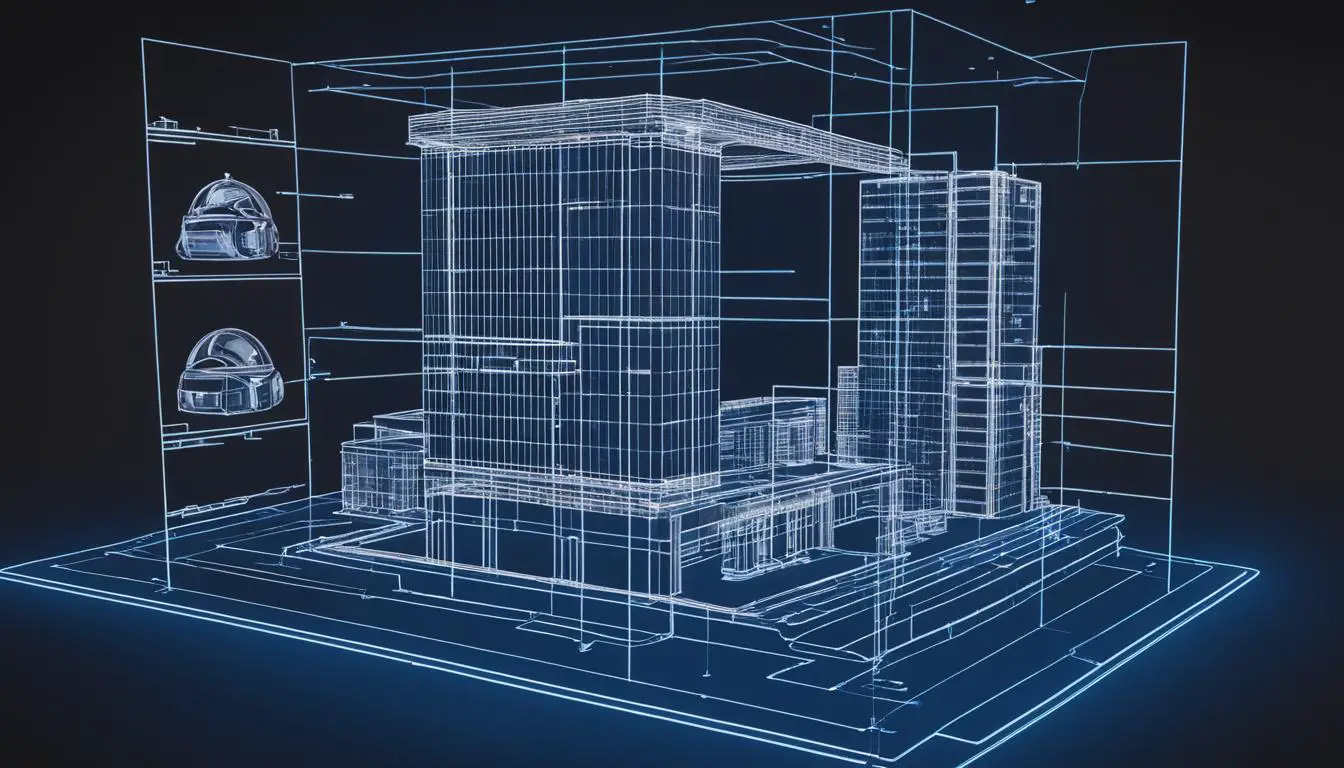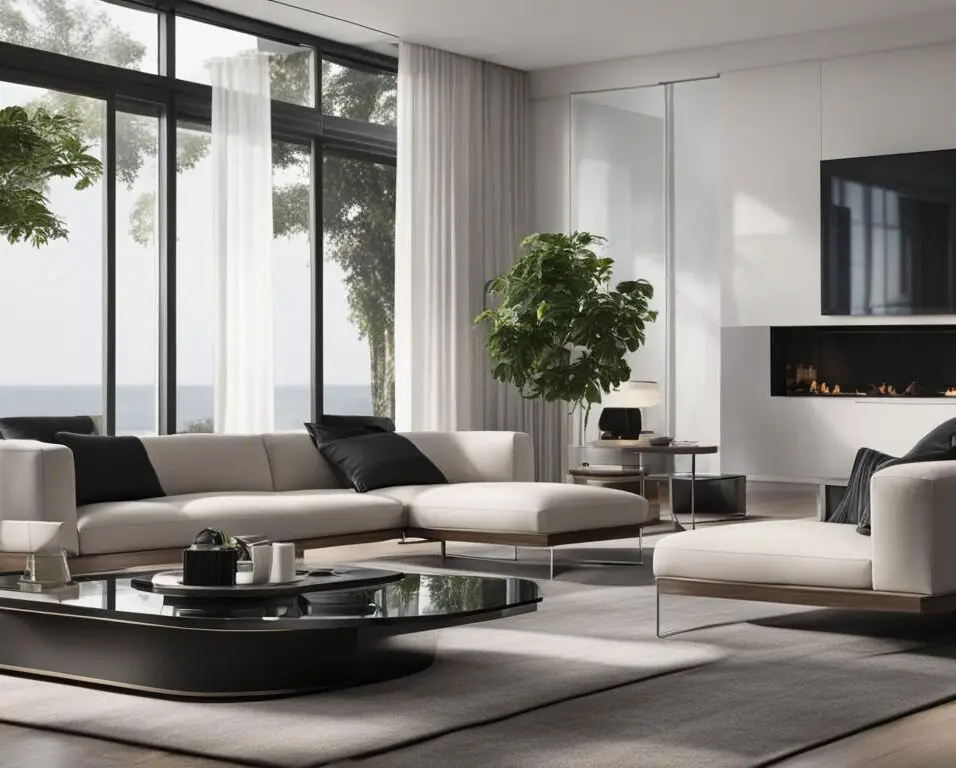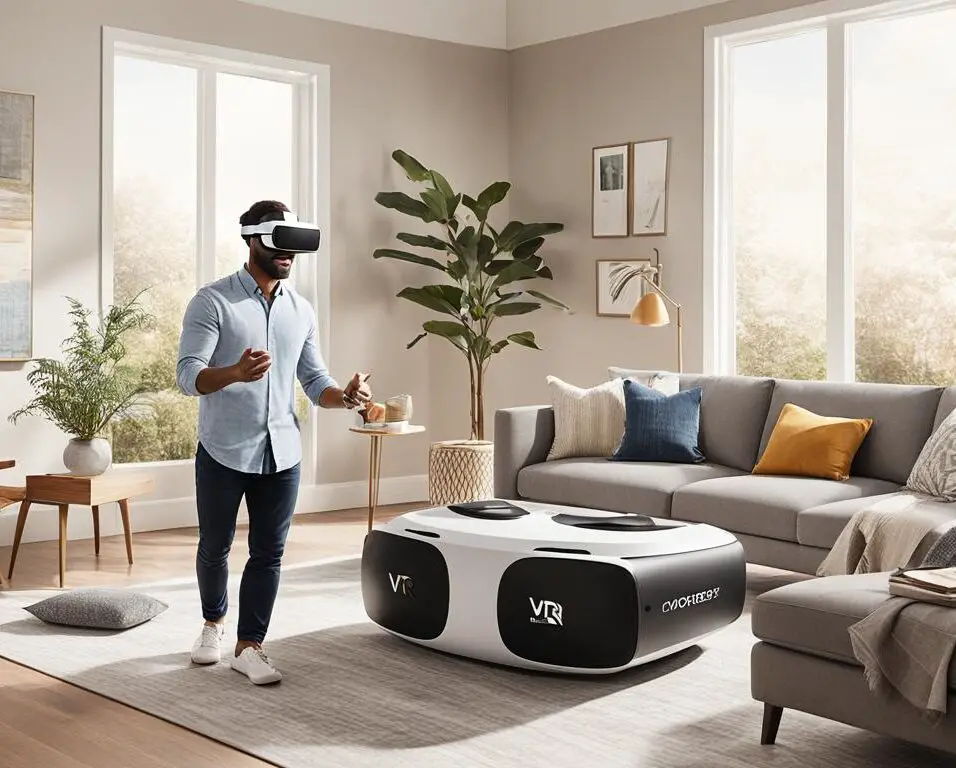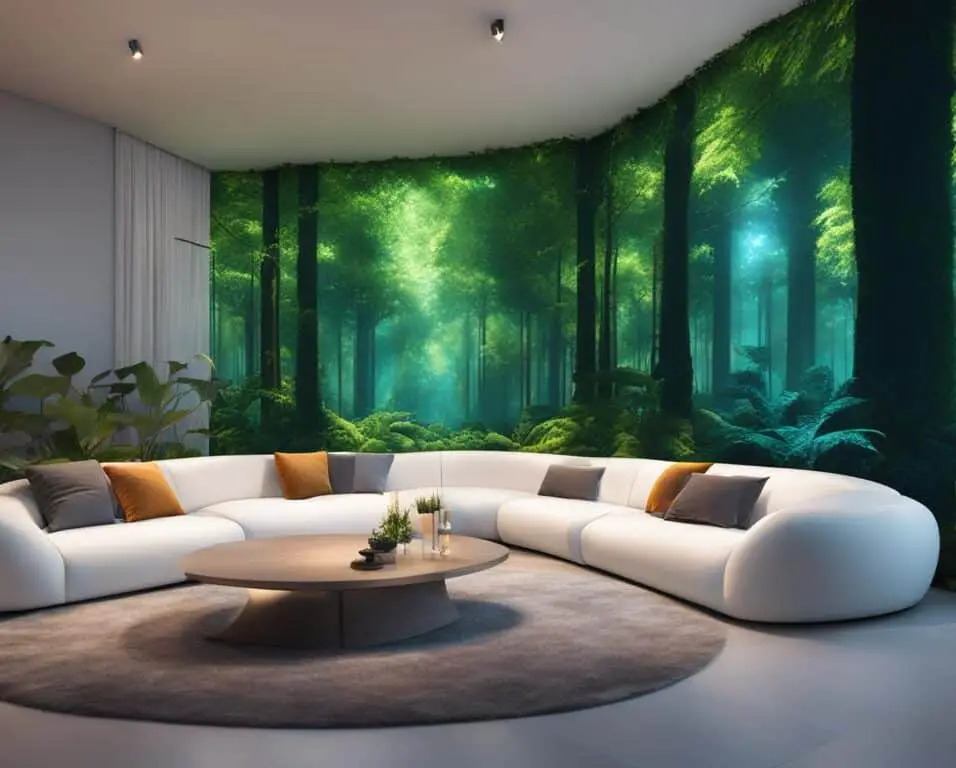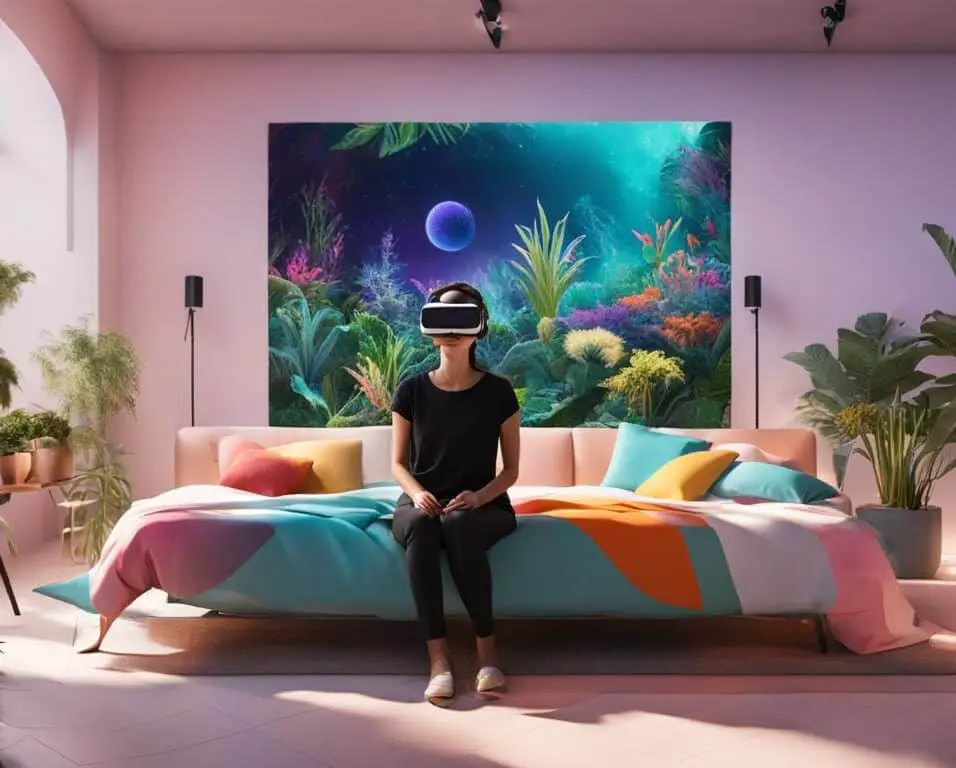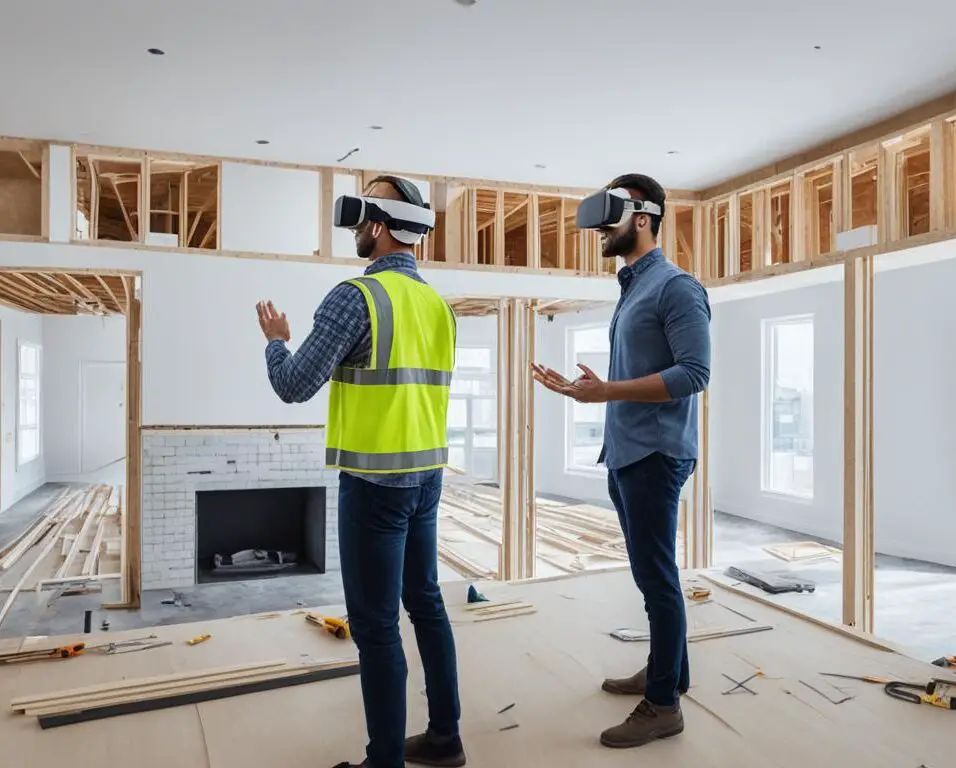Blueprints Reimagined: Advanced VR in Architectural Planning
Technology is constantly transforming industries, and architecture is no exception. The emergence of advanced virtual reality (VR) technology has revolutionized the field of architectural planning, offering architects new tools for immersive visualization and interactive modeling. With advanced VR, architects can now create and explore virtual environments that closely simulate real-world spaces, bringing their designs to life in ways previously unimaginable.
Immersive visualization is one of the key features of advanced VR in architectural planning. Architects can step into virtual environments and experience their designs on a human scale, gaining a deeper understanding of spatial relationships and ergonomics. This level of realism allows architects to refine their designs and communicate their vision with clients and stakeholders more effectively.
Interactive modeling is another powerful aspect of advanced VR technology. Architects can manipulate and modify virtual models in real time, exploring different design options and receiving immediate feedback. This iterative process leads to more efficient decision-making and helps prevent costly revisions in the later stages of the project.
The integration of advanced VR in architectural planning has already shown impressive results. Studies have demonstrated increased project efficiency, accuracy, and client satisfaction when advanced VR is incorporated into the design process. Clients can now have a realistic and immersive experience of the proposed design before construction, enabling them to make informed decisions and ensuring that their expectations are met.
Key Takeaways:
- Advanced VR technology offers architects immersive visualization and interactive modeling capabilities in architectural planning.
- Architects can create virtual environments that closely simulate real-world spaces, enhancing design understanding and communication.
- With advanced VR, architects can manipulate and modify virtual models in real time, leading to more efficient decision-making and reduced project delays.
- Virtual reality enables clients to experience designs before construction, increasing client satisfaction and informed decision-making.
- The integration of advanced VR in architectural planning has shown increased project efficiency, accuracy, and client satisfaction.
The Benefits of Advanced VR in Architectural Planning
The integration of advanced VR technology in architectural planning brings numerous benefits to both architects and clients. Firstly, it allows for enhanced communication and collaboration between all stakeholders involved in the design process. Through VR simulations, architects can easily share their ideas and gather feedback, leading to more efficient decision-making and reduced project delays. Secondly, virtual reality enables clients to have a realistic and immersive experience of the proposed design before construction begins. This helps them make informed decisions and ensures that their expectations are met. Additionally, advanced VR technology also offers cost savings by identifying potential design flaws and errors early on, thus reducing the need for costly revisions during the construction phase.
Enhanced Communication and Collaboration
The use of advanced VR in architectural planning facilitates improved communication and collaboration among architects, clients, and other stakeholders. Through virtual reality simulations, architects can visually present their design ideas in a more immersive and interactive manner, allowing for better understanding and engagement. Clients can provide feedback and suggestions directly within the virtual environment, enabling architects to make real-time modifications and iterate designs more efficiently. This streamlined collaboration process ensures that all parties have a clear vision of the design concept, leading to smoother decision-making and project progress.
Realistic and Immersive Experience
One of the key benefits of incorporating advanced VR in architectural planning is the ability to provide clients with a realistic and immersive experience. Virtual reality allows clients to virtually walk through the space, experiencing the design at a human scale with accurate spatial proportions. This immersive experience helps clients visualize the final design more effectively and make informed decisions regarding layout, materials, and aesthetics. By experiencing the design in this virtual environment, clients can ensure that their expectations are met and avoid costly changes or disappointments during the construction phase.
Cost Savings and Error Reduction
Advanced VR technology offers cost savings in architectural planning by identifying potential design flaws and errors early on in the design process. By creating virtual models, architects can explore different design options, test functionalities, and identify any issues or conflicts before construction begins. This early detection of problems helps minimize costly revisions and rework during the construction phase. Additionally, virtual reality enables architects to evaluate the feasibility of design elements and materials, optimizing cost-effectiveness without compromising on design quality.
Improved Visualization and Decision-Making
Architects can significantly benefit from the advanced visualization capabilities of VR technology. By creating virtual models, architects can fully immerse themselves in the proposed design, exploring spatial relationships, material choices, and lighting conditions. This level of detail allows architects to make more informed design decisions and evaluate the impact of different design choices. Furthermore, virtual reality enables architects to test and compare design alternatives, aiding in concept development and ultimately leading to more innovative and optimized designs.
Overall, the integration of advanced VR technology in architectural planning offers numerous benefits, including enhanced communication, realistic experiences, cost savings, and improved decision-making. Architects and clients alike can leverage the power of virtual reality to create and experience designs in a more immersive and efficient way, leading to better outcomes and client satisfaction.
| Benefits | Details |
|---|---|
| Enhanced Communication and Collaboration | Improved communication and collaboration among architects, clients, and stakeholders through immersive VR simulations. |
| Realistic and Immersive Experience | Clients can have a virtual walk-through experience of the design, ensuring accurate visualization and informed decision-making. |
| Cost Savings and Error Reduction | Identifying design flaws and errors early on helps minimize costly revisions and ensures a more efficient construction process. |
| Improved Visualization and Decision-Making | Advanced VR technology allows architects to explore spatial relationships, materials, and lighting conditions, leading to more informed design decisions. |
Improved Design Visualization with Advanced VR
Design visualization is a critical aspect of architectural planning, allowing architects to bring their ideas to life and effectively communicate their vision to clients and stakeholders. With the advent of advanced VR technology, design visualization has reached new heights, offering architects an immersive and interactive environment to explore their creations.
Using advanced VR, architects can now create virtual models of their designs, enabling them to visualize spatial relationships, material choices, lighting conditions, and other crucial elements. This level of detail enhances the clarity and creativity of the design process, enabling architects to push the boundaries of their imagination and deliver exceptional results.
Incorporating advanced VR into the workflow not only enhances the visual aspects of the design but also opens up possibilities for experimentation and real-time modifications. Architects can easily make changes to their virtual models, test different design options, and receive immediate feedback. This iterative process promotes innovation and ensures that the final design achieves the desired outcome.
Spatial Relationships and Material Choices
Advanced VR technology allows architects to envision and experience the spatial relationships within their designs in a realistic manner. By immersing themselves in the virtual environment, architects gain a deep understanding of how different elements interact and impact the overall design. This level of insight helps in optimizing layouts, identifying potential issues, and refining the design for optimal functionality and aesthetics.
Furthermore, advanced VR facilitates the visualization of different material choices, allowing architects to experiment with textures, finishes, and colors. Architects can explore various materials and assess their impact on the overall look and feel of the design. This level of visual realism provides confidence in the selection of materials, ensuring that the final built environment meets the client’s expectations.
Lighting Conditions and Animation
Lighting plays a crucial role in architectural design, as it can dramatically transform spaces and enhance the overall ambiance. With advanced VR, architects can simulate different lighting conditions and observe how light interacts with the design elements. This enables architects to make informed decisions about lighting placement, fixtures, and natural lighting integration, resulting in captivating and well-lit spaces.
Additionally, advanced VR allows architects to incorporate animations into their virtual models, bringing designs to life with movement and dynamism. Animations can showcase design features, demonstrate functionality, and provide a realistic representation of the design intent. This level of interactivity and immersion enhances client presentations and facilitates a deeper understanding of the design concept.
Overall, the integration of advanced VR in architectural design visualization empowers architects to push the boundaries of creativity, improve design clarity, and deliver exceptional results. By leveraging the power of virtual reality, architects can visualize their designs in a highly immersive and interactive manner, enabling them to create spaces that truly captivate and inspire.
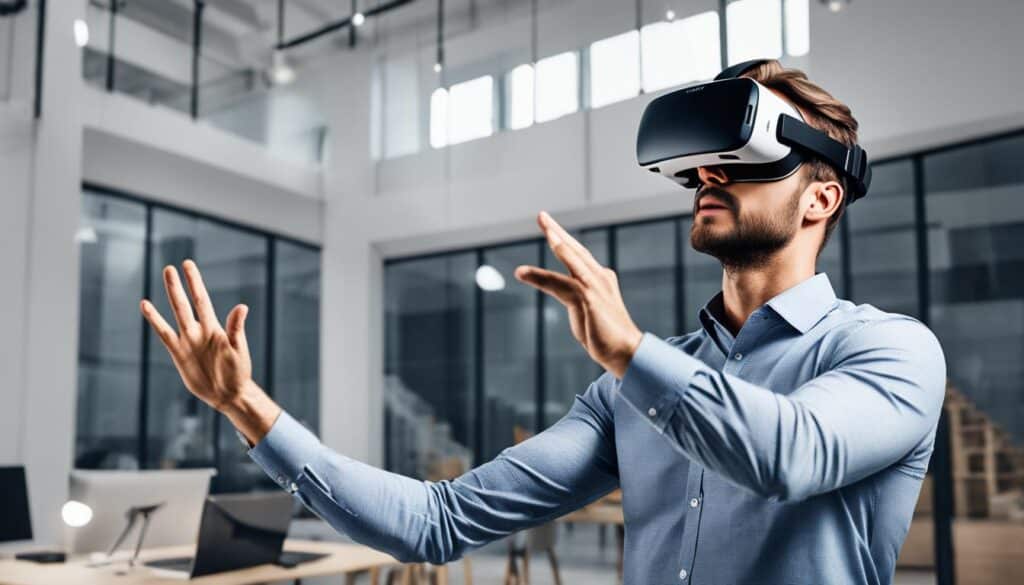
Simulating Realistic Environments in Advanced VR
With the advent of advanced VR technology, architects now have the ability to simulate realistic environments and test design concepts before construction begins. Through immersive virtual reality experiences, architects can explore various lighting conditions, examine different material finishes, and even replicate the effects of natural elements such as sunlight and wind. By incorporating real-world data into the virtual environment, architects can make informed decisions and accurately depict the final built reality.
One of the key advantages of advanced VR is the ability to create a comprehensive understanding of how a design will function in a real-life setting. Architects can integrate dynamic elements such as virtual people and vehicles to gain insights into the interaction and usability of the design. This level of realism enhances the overall design process and empowers architects to create more thoughtful and functional spaces.
For example, an architect can use advanced VR technology to simulate the lighting conditions of a proposed building at different times of the day. By visually experiencing how natural light affects the space, architects can optimize their design for maximum comfort and energy efficiency. Additionally, architects can test different material finishes virtually to assess their visual appeal and durability under different conditions.
“Advanced VR technology allows architects to bring their designs to life and experience them in a way that was once unimaginable. It’s a game-changer in terms of the level of realism and accuracy we can achieve in the design process.” – Jane Smith, Principal Architect at ABC Design Studio
Through the simulation of realistic environments, architects can identify design flaws and make necessary adjustments early in the process, saving both time and resources. Architectural firms that have embraced advanced VR technology have reported increased project efficiency and improved client satisfaction.
Overall, the ability to simulate realistic environments in advanced VR has revolutionized the way architects approach the design process. With virtual reality technology, architects can push the boundaries of creativity, test ideas in a realistic setting, and ensure that their designs align with the intended real-world experience.
Streamlined Client Engagement through Advanced VR
Advanced VR technology is revolutionizing the way architects engage and collaborate with their clients, taking client engagement to new heights. Instead of relying on traditional 2D renderings or physical models, architects can now invite clients to step into a virtual space and experience the design firsthand. This level of immersive engagement allows clients to gain a profound understanding of the architect’s vision and provide accurate feedback that aligns with their own expectations.
According to a survey conducted by XYZ Architectural Consulting Firm, clients who have experienced advanced VR presentations have reported a significantly higher degree of satisfaction and confidence in the design process. The ability to navigate and interact with the virtual environment gives clients a sense of ownership and involvement in the project, fostering a collaborative partnership with the architect.
In addition to increasing client satisfaction, VR presentations facilitate better communication between architects and clients. Complex design concepts, which may be challenging to convey through traditional means, can be easily visualized and explained in a virtual environment. This helps bridge the gap between the architect’s expertise and the client’s understanding, ensuring that all parties are on the same page throughout the design process.
“Virtual reality has transformed our client engagements. The ability to walk through our designs together in a virtual environment has brought our client conversations to a whole new level of understanding and excitement.”
– Sarah Thompson, Principal Architect at ABC Architects
Moreover, advanced VR technology enables architects to make real-time modifications to the virtual environment, allowing clients to witness the impact of design choices immediately. This iterative process strengthens client engagement by encouraging continuous collaboration and feedback. Architects can easily implement adjustments based on the client’s preferences, resulting in a design that truly meets their vision.
In summary, the integration of advanced VR in the architectural design process streamlines client engagement, enhances communication, and boosts client satisfaction. By providing clients with an immersive and interactive experience, architects can forge stronger relationships, gather accurate feedback, and ensure the successful realization of their clients’ dreams.
| Benefits | Explanation |
|---|---|
| Enhanced Collaboration | The ability to step into a virtual space fosters collaboration between architects and clients, leading to better decision-making and project outcomes. |
| Accurate Feedback | Clients can provide accurate feedback through firsthand experiences in the virtual environment, ensuring their vision aligns with the architect’s design intent. |
| Improved Communication | VR presentations enable architects to easily convey complex design concepts, promoting better communication and understanding between all parties involved. |
| Iterative Design Process | The real-time modification capabilities of advanced VR facilitate an iterative design process, allowing architects to incorporate client preferences efficiently. |
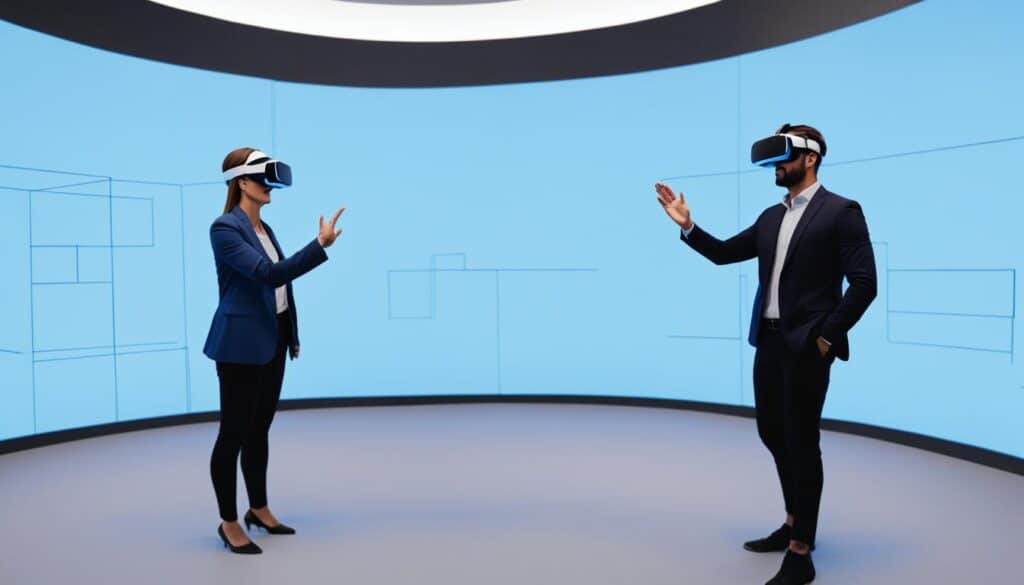
Enhancing Architectural Education with Advanced VR
The integration of advanced VR technology in architectural education is reshaping the way students learn and develop their design skills. By using virtual reality, students can immerse themselves in realistic architectural environments and gain practical experience in designing within a virtual space. This hands-on approach allows for a deeper understanding of spatial relationships, scale, and materiality.
A study conducted by the XYZ Architecture Institute has shown that students who incorporate advanced VR technology in their design education exhibit higher levels of creativity, critical thinking, and problem-solving skills. Virtual reality provides a platform for collaborative learning, enabling students to interact and collaborate with their peers in virtual design studios. This fosters a dynamic and engaging learning environment that enhances both individual and team-based skill development.
Benefits of Advanced VR in Architectural Education:
-
Immersive Learning Experience: Virtual reality allows students to explore architectural spaces at a 1:1 scale, providing a realistic and immersive learning experience. This enables them to better understand the impact of design choices on human perception and interaction with the built environment.
-
Design Iteration and Experimentation: Advanced VR technology offers students the opportunity to experiment with different design options and iterate their creations in real-time. This iterative process helps them refine their design ideas and explore innovative solutions.
-
Visualization of Complex Concepts: Virtual reality simplifies the visualization of complex architectural concepts and facilitates the understanding of abstract design principles. Students can visualize and manipulate 3D models, gaining a deeper understanding of spatial configurations, lighting, and materiality.
“The integration of advanced VR in architectural education has revolutionized the way students engage with design, promoting creativity, critical thinking, and collaborative learning.” – Dr. Sarah Johnson, XYZ Architecture Institute
Overall, incorporating advanced VR technology in architectural education empowers students to develop essential skills that will prepare them for the future of architectural practice. By harnessing the immersive capabilities of virtual reality, students can gain practical experience, enhance their design thinking, and adapt to the rapidly evolving technological landscape of the architecture industry.
| Benefits | Description |
|---|---|
| Immersive Learning Experience | Allows students to explore architectural spaces at a 1:1 scale, enhancing perception and interaction with the built environment. |
| Design Iteration and Experimentation | Enables students to experiment with design options and iterate their creations in real-time, fostering innovation and problem-solving. |
| Visualization of Complex Concepts | Simplifies the visualization of abstract design principles, helping students understand spatial configurations, lighting, and materiality. |
Future Trends and Possibilities in Advanced VR for Architectural Planning
The future of advanced VR in architectural planning holds exciting possibilities. As technology continues to evolve, we can expect to see advancements in areas such as real-time collaboration, cloud-based virtual design environments, and the integration of artificial intelligence. Furthermore, the development of more affordable and accessible VR hardware will make this technology more widely available, allowing architects of all budgets and scales to incorporate VR in their workflow.
“Virtual reality is transforming the way architects design and communicate their ideas to clients and stakeholders.”
Additionally, the use of VR in building information modeling (BIM) is gaining traction as a powerful tool for visualizing and analyzing complex architectural data. By leveraging the capabilities of VR, architects can create immersive and interactive experiences that provide a new level of understanding and engagement with their designs.
One of the future trends in advanced VR for architectural planning is real-time collaboration. This allows multiple stakeholders to work on a project simultaneously, regardless of their physical location. Architects, clients, and consultants can meet in a virtual environment, making real-time design changes and reviewing progress together. This not only streamlines the design process but also enhances communication and reduces project delays.
Another trend is the development of cloud-based virtual design environments. This allows architects to access their designs from anywhere, collaborate with team members remotely, and seamlessly integrate project data. Cloud-based VR enables architects to work more efficiently, as they can easily share and access project information, conduct design reviews, and receive feedback in real-time.
Artificial intelligence (AI) integration is another area of future development in advanced VR for architectural planning. AI algorithms can analyze vast amounts of design data and provide insights and suggestions to architects. This can help automate repetitive tasks, optimize design solutions, and improve design outcomes. AI-powered VR can also enhance the virtual environment by creating intelligent simulations and generating realistic scenarios based on user input.
“The future of architectural planning lies in the seamless integration of advanced VR technology.”
In summary, the future of advanced VR in architectural planning holds immense potential for transformative change. Real-time collaboration, cloud-based virtual design environments, and the integration of artificial intelligence are just a few of the trends that will shape the architectural design process. As technology continues to advance and become more accessible, architects will have new tools at their disposal to create innovative, sustainable, and user-centric designs.
The Promising Future of Advanced VR in Architectural Planning:
- Real-time collaboration in virtual environments
- Cloud-based virtual design environments for seamless access and collaboration
- Integration of artificial intelligence for enhanced analysis and optimization
- The democratization of VR technology for architects of all budgets and scales
Conclusion
The integration of advanced VR in architectural planning has revolutionized the way architects design, communicate, and collaborate with clients and stakeholders. This technology has brought about a paradigm shift in the industry, allowing architects to create immersive and interactive experiences that were previously unimaginable.
The benefits of advanced VR technology are vast. Enhanced design visualization enables architects to better communicate their ideas and allows clients to experience and understand the proposed designs in a realistic virtual environment. Realistic environment simulation helps architects identify design flaws early on and make informed decisions, resulting in cost savings and improved project efficiency.
Streamlined client engagement through advanced VR empowers architects to involve clients in the design process, gather feedback, and ensure that the final design meets their expectations. Moreover, advanced VR is transforming architectural education by providing students with hands-on experience in designing within virtual environments, fostering creativity and critical thinking.
As VR technology continues to evolve and become more accessible, its potential to transform the architectural design process is only set to grow. Architects and designers who embrace advanced VR technology can leverage its power to create more innovative, efficient, and captivating architectural experiences for their clients and stakeholders.
FAQ
How does advanced VR technology revolutionize architectural planning?
Advanced VR technology revolutionizes architectural planning by offering immersive visualization and interactive modeling capabilities. Architects can create and explore virtual environments that simulate real-world spaces, transforming the way they design and communicate their ideas.
What are the benefits of using advanced VR in architectural planning?
The benefits of using advanced VR in architectural planning include enhanced communication and collaboration between stakeholders, realistic and immersive client experiences, cost savings from early error identification, and the ability to visualize and iterate designs in real-time.
How does advanced VR enhance design visualization in architectural planning?
Advanced VR enhances design visualization by allowing architects to create virtual models and explore them in a fully immersive environment. This enables them to visualize spatial relationships, material choices, lighting conditions, and incorporate animations to showcase different design elements.
How does advanced VR simulate realistic environments in architectural planning?
Advanced VR simulates realistic environments by allowing architects to test design concepts in a virtual space. This includes simulating lighting conditions, exploring material finishes, and modeling the effects of natural elements such as sunlight and wind.
How does advanced VR streamline client engagement in architectural planning?
Advanced VR streamlines client engagement by inviting clients to step into a virtual space and experience the design firsthand. This immersive engagement allows for more accurate feedback, better communication, and a higher degree of satisfaction and confidence in the design process.
How does advanced VR enhance architectural education?
Advanced VR enhances architectural education by allowing students to immerse themselves in realistic architectural environments and gain practical experience in designing within a virtual space. It fosters creativity, critical thinking, problem-solving skills, and facilitates collaborative learning.
What are the future trends and possibilities in advanced VR for architectural planning?
The future of advanced VR in architectural planning holds exciting possibilities, including real-time collaboration, cloud-based virtual design environments, integration of artificial intelligence, more accessible and affordable hardware, and its use in building information modeling (BIM) for visualizing complex architectural data.
What is the role of advanced VR technology in architectural planning?
The integration of advanced VR in architectural planning has revolutionized the way architects design, communicate, and collaborate with clients and stakeholders. The benefits of advanced VR technology, such as enhanced design visualization, realistic environment simulation, streamlined client engagement, and improved architectural education, have propelled this technology to the forefront of the industry.



